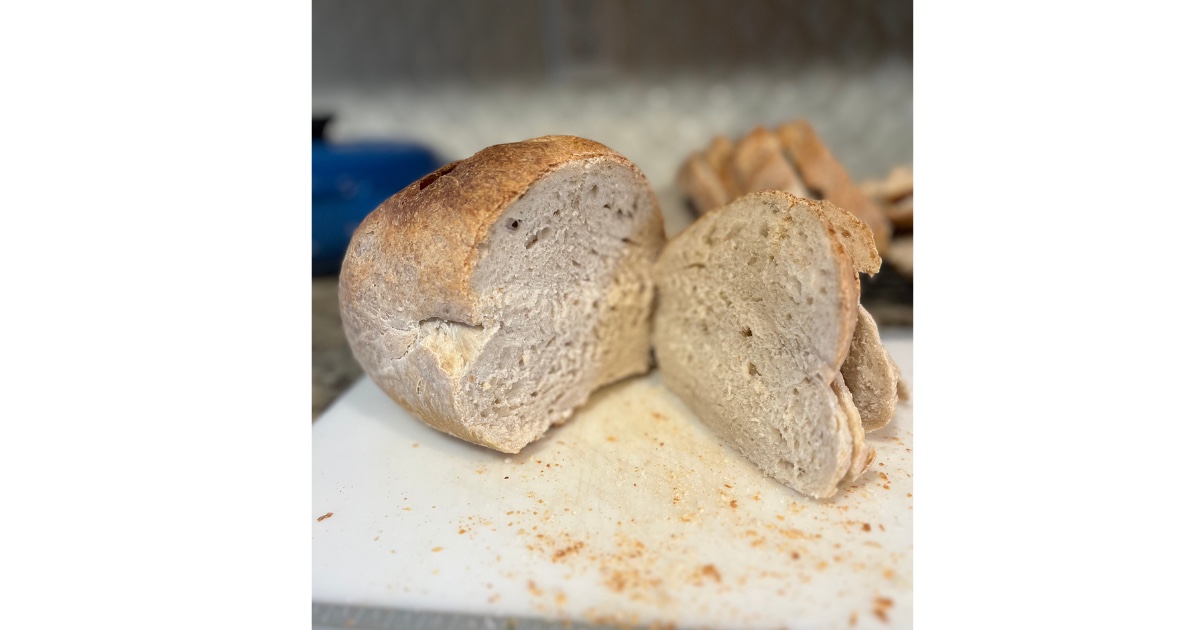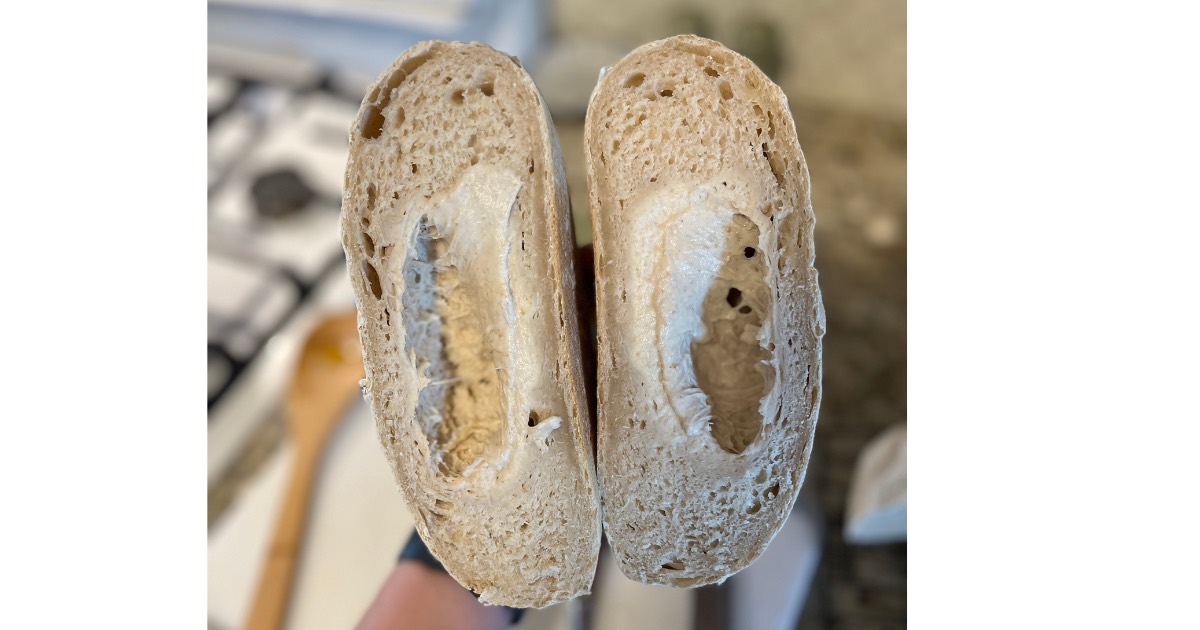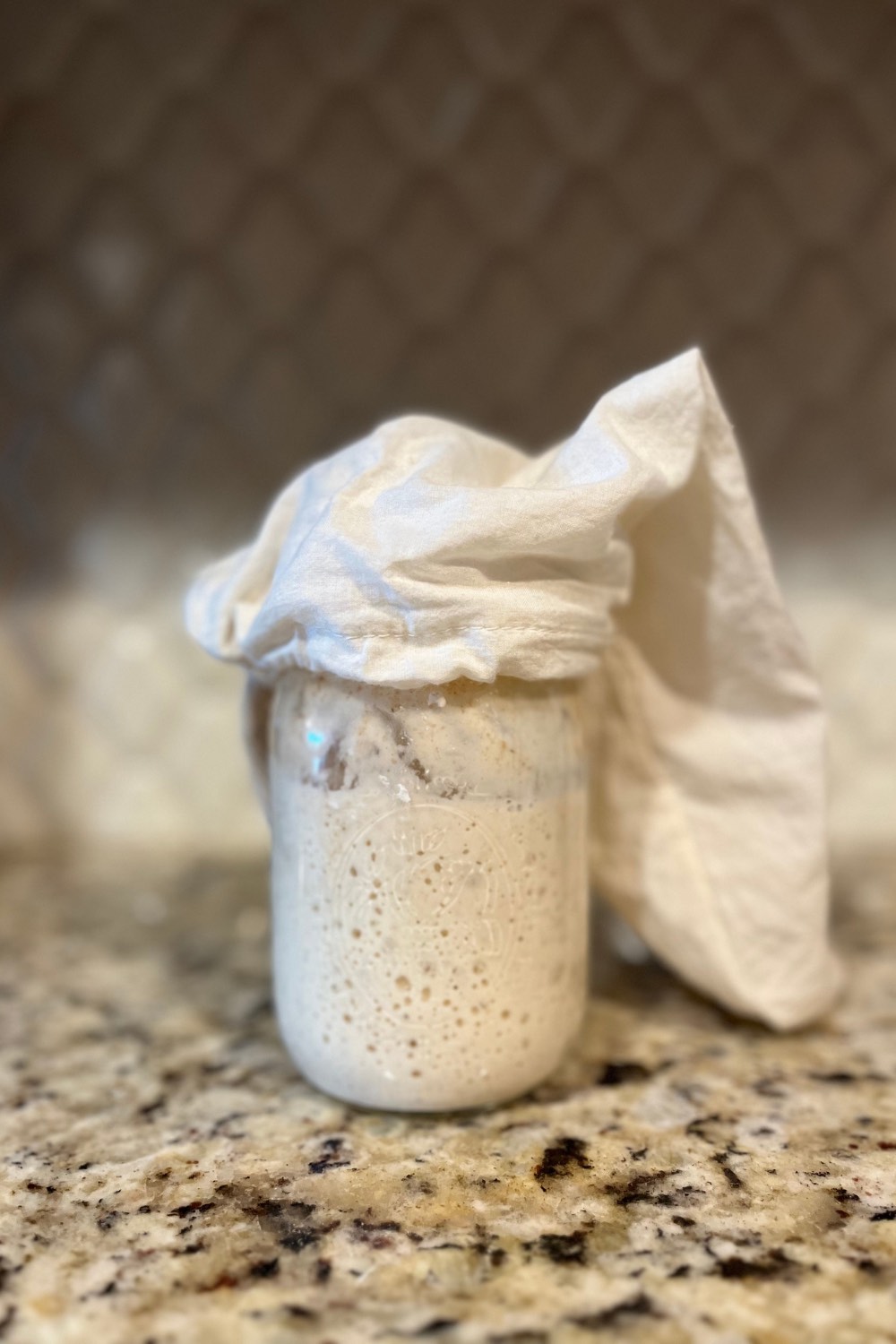Learning how to store sourdough starter in the fridge is a game changer! If you are looking for a foolproof way to continue your sourdough journey (especially if you are not an everyday baker), learn how to store sourdough starter in the fridge.
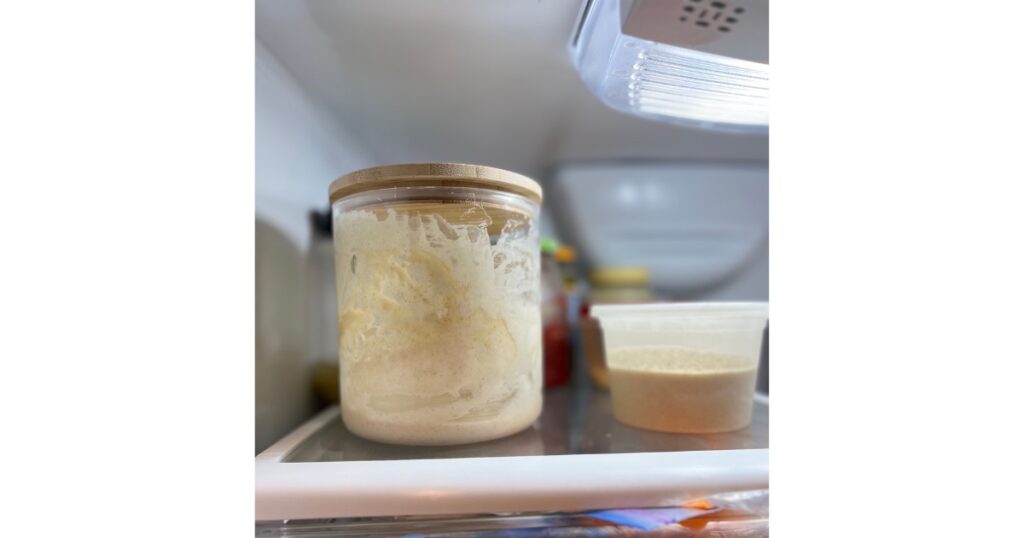
I remember the first few weeks of having my sourdough starter like it was yesterday. I was so excited because I made my sourdough starter from scratch and was finally able to keep the sourdough discard after my starter was ready to use.
What I quickly realized was, I am not an every day baker. I was discarding daily and making baked goods 1-2x per week.
Let’s just say, the amount of discard I had building in my refrigerator was more than I could handle. I was desperate for a way to slow down the process. I then learned how to store sourdough starter in the fridge!
This was a game changer for me. I started to think of the refrigerator as a ‘pause’ button when making sourdough. Not only do refrigerators come in handy when bulk fermenting sourdough baked goods, but it also helps to reduce how often to feed a sourdough starter.
Maintaining a sourdough starter can feel overwhelming. If you made your own sourdough starter from scratch or receive it from someone else as a gift (or buy purchasing it), it can be hard to know what to do next!
By utilizing the fridge to store sourdough, you slow the speed of fermentation. And if you are also not an every day baker, this is why you should also store your sourdough starter in the fridge.
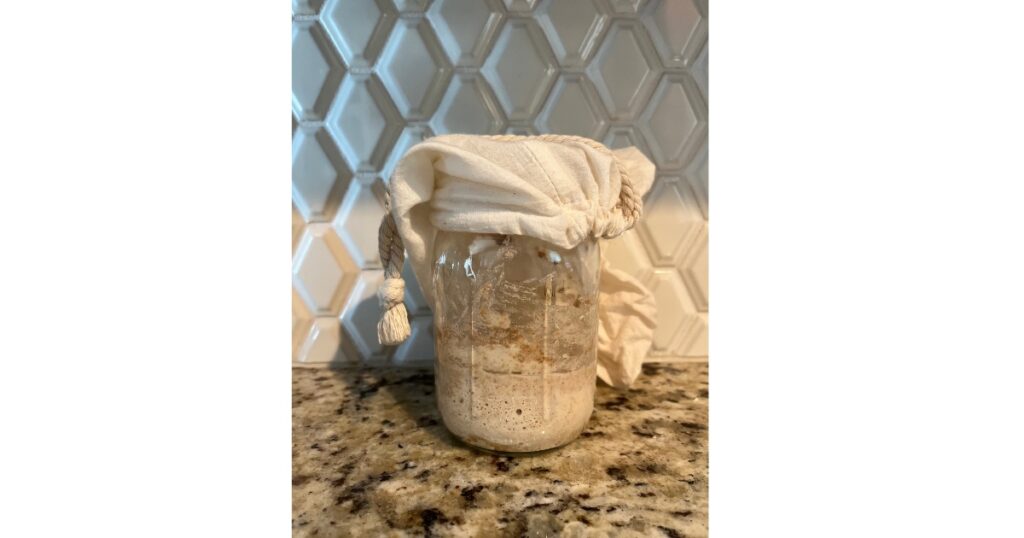
This will leaving your sourdough starter on the countertop can keep one eye on the clock and the other on how long sourdough starter has been stored in the fridge for.
The Best Way to Store Sourdough Starter – The Fridge
There are four methods to maintain and feed a sourdough starter. These include the countertop method, freezer method, dry method and the fridge method.
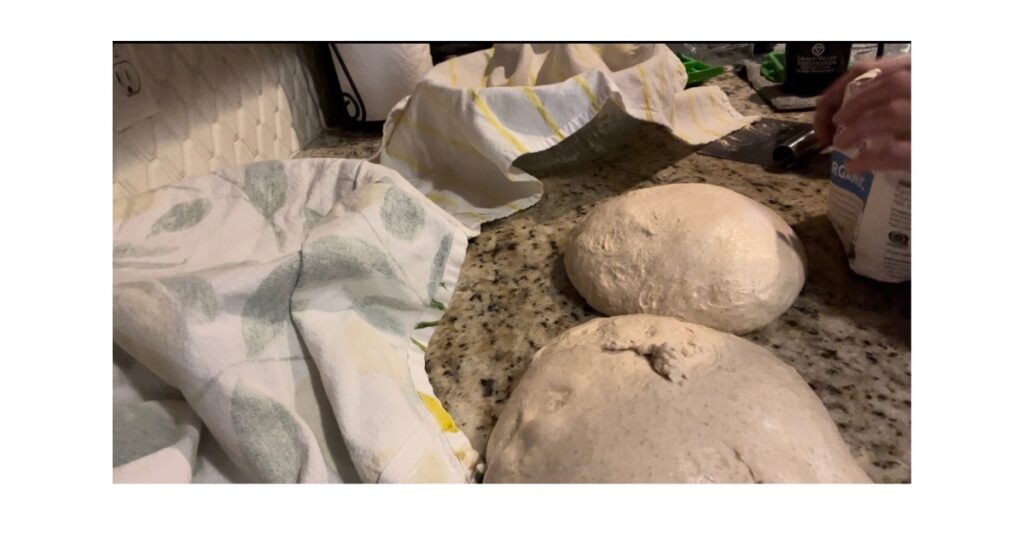
Reasons why you should store your sourdough starter in the fridge:
- You make recipes 1-2x a week (or less)
- You do not want to keep one eye on the clock
- You live somewhere temperature and humidity are warm – IE your house is regularly over 75 degrees Fahrenheit (speeding up fermentation)
- You are going on vacation or will be unable to feed your sourdough daily
- You are sick
- You just want a pause from your sourdough journey
- You want to make sourdough easy
The length of time between feeding sourdough depends on how often you want to use sourdough starter within a recipe. While consistency is important, timing can change based on life needs.
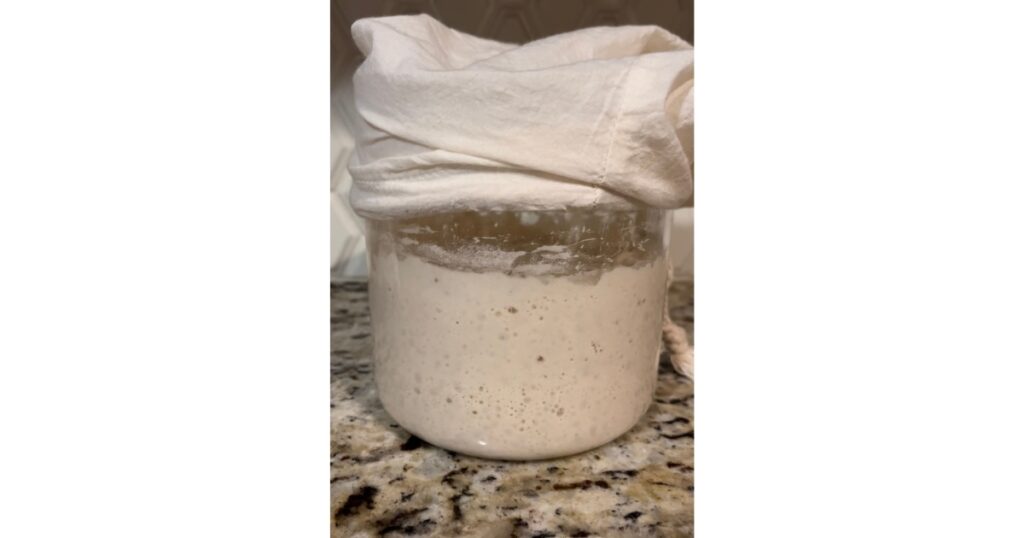
How to store sourdough starter in the fridge
The process of maintaining a sourdough starter in the refrigerator is easy. By storing the sourdough starter in the fridge, you feed it less as the fermentation period reduces.
Simply feed your sourdough starter (at least) one time a week and put it in the fridge until you are ready to use it again.
Store the sourdough starter with a lid (loosely covering, not tight), plastic wrap, beeswax wrap or a nut milk bag. My preferred method is to use beeswax wrap and a nut milk bag.
When you remove the sourdough starter from the fridge, it may have a hardened ‘skin’ or top layer. This is because is not stirred daily. You can either stir it into your starter when baking next or discard it into the trash.
If the skin changes to gray in color and a layer of water forms, either stir it in or discard it into the trash. This is an acidic layer, called hooch. Hooch is not harmful to your sourdough starter. It is a natural process and result of fermentation.
If you are hesitant about a skin on your starter, take a spoonful of the starter beneath the skin, transfer it into a new clean jar and feed it.

How to revive sourdough starter from fridge
To revive a sourdough starter from the fridge, there are mixed opinions on the internet. You can either cold feed into a recipe or allow your starter to reach peak size and then using within a recipe.
Cold Sourdough Starter method
Most times, using cold sourdough starter which has not been recently fed can work within a recipe. However, items which lean on sourdough starter for rise (rather than a leavener like baking soda/baking powder) may benefit from sourdough starter which is at a peak level (IE pizza crust, biscuits, muffins, etc.).
To complete the cold method, simply discard from your sourdough starter the amount you need for a recipe. In theory, the sourdough starter you are discarding will be fed by the flour used within a recipe.
This can even be beneficial in warmer weather where fermentation occurs quickly due to hot temperatures and humidity.
Fridge to Peak method
To allow a sourdough starter to come to the peak before using, follow the below method.
Feed your sourdough starter before placing it within the fridge. 4-12 hours (depending on the temperature of your home), remove the sourdough starter from your fridge. Allow it to come to room temperature and sit on the countertop until it has doubled in size.
Again, temperature plays a huge role in how quickly your sourdough starter will come to peak size. It may take less than 4 hours or more than 12 depending on the temperature and humidity of your home.
Additionally, if you had a dime size amount of carryover sourdough starter left and fed it with flour and water, it will take longer than a sourdough starter which is equal parts carryover starter, flour and water.
For both methods, when you are done using the sourdough starter, you can transfer it back into the fridge after feeding it or allow it to sit on the countertop. Remember, whatever method you use (countertop, fridge, dry, freezer), you will need to adjust your feeding schedule accordingly.
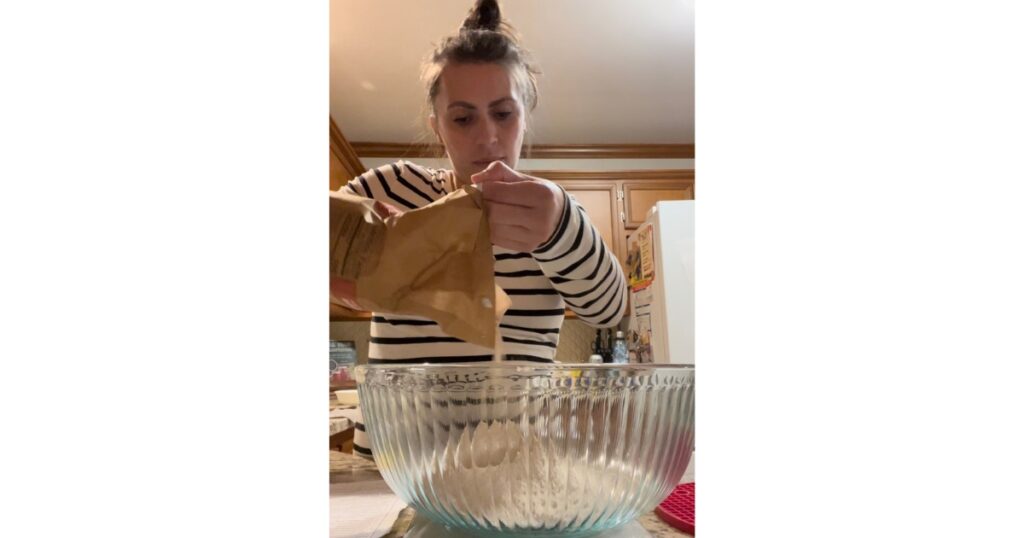
Frequently asked questions:
How to feed sourdough starter from fridge
It is easy to reactive sourdough starter from the fridge. The two methods are the cold sourdough starter method and fridge to peak method.
- In theory, the cold sourdough starter method means you feed your carryover sourdough starter the amount of discard you will need (plus an ounce or two extra) for a recipe prior to placing it in the fridge.
- Use the discard directly into a recipe without letting it warm up on the counter and reach peak levels. Upon discarding, this leaves an ounce or two of carryover starter left after using starter within a recipe.
- The fridge to peak method means you would maintain your sourdough starter at your preferred amount (we keep ours at 1-2 ounces). When removing the sourdough starter from the fridge, feed it the amount needed for a recipe.
- Allow the starter to rise to peak before using as a discard within a recipe. Feed the starter your maintenance level and place back in the fridge.
How often to feed sourdough starter in a fridge
Sourdough starter is pretty resilient. Some people have luck reviving their sourdough starter from the fridge after an extended period of time. We are talking months or weeks after it has been placed in the refrigerator.
While I am not recommending this, reviving a sourdough starter from the fridge can be quick if recently fed or take some time and nurturing. To keep a healthy, happy starter, aim for feeding the sourdough starter weekly.
If it takes longer than 4-6 hours to reach peak size, perhaps feed again to encourage the sluggish starter to pick up speed. You can even dry feed your sourdough starter if it needs.
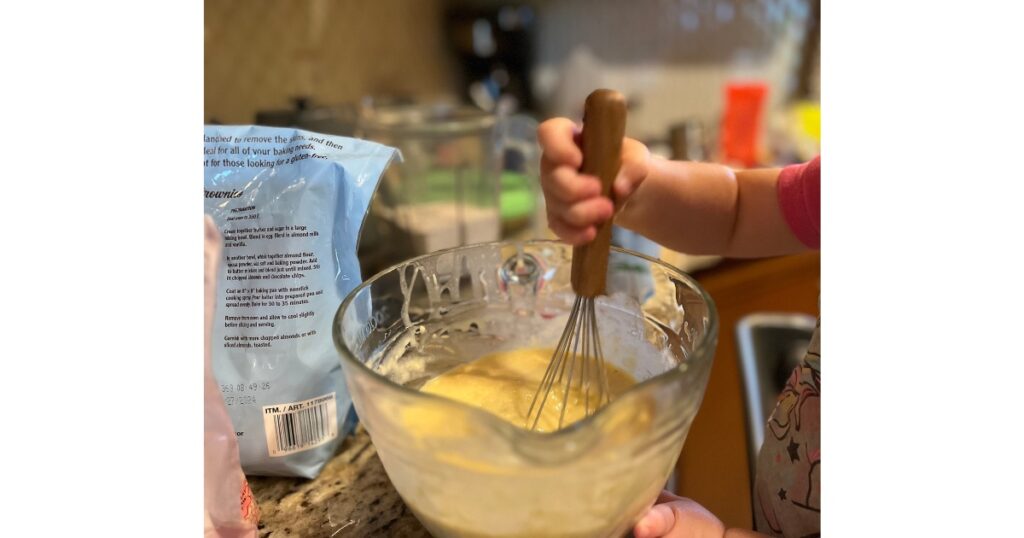
When to put sourdough starter in the fridge
At any point during your sourdough journey, you can place your starter in the fridge one the starter is established. Most commonly, people discard their starter (IE remove some starter for a recipe) and feed the starter before placing it in the refrigerator. As long as the sourdough starter is not hungry before it goes in the fridge, it can be placed in at any time.
Feeding sourdough ratio from fridge
My personal preference when maintaining a sourdough starter is to maintain a small portion. By weight, I keep on hand an average sourdough starter of 1 to 2 ounces. When I first made a sourdough starter from scratch, it was no more than a few ounces in size to reduce overall waste.
On my weekly sourdough schedule, I meal plan baking one or two items a week. I may make sourdough bread and the other a dessert (like sourdough sugar cookies) or breakfast item (sourdough bagels or sourdough waffles). Based on the amount of discard a recipe calls for, I will add this to my starter.
For example, if we are making sourdough bread, the recipe calls for 7 ounces of sourdough starter. Tho my carryover sourdough starter, I will add 3.5 ounces of water (99 g water) and 3.5 ounces of flour (99 g flour). This way, when I discard, I have the same amount of starter remaining (about 1-2 ounces).
How long can you keep sourdough starter in the fridge?
Because the temperature of a refrigerator slows down fermentation, a maintained sourdough starter should be fed weekly. Some extend this to weeks or months though it may reduce the speed of fermentation and effectiveness of rise when used within a recipe.
Sourdough starter discard can be kept in an air tight container for up to 10 days. It may become sluggish at this point if not fed. Either use within a recipe or throw away.
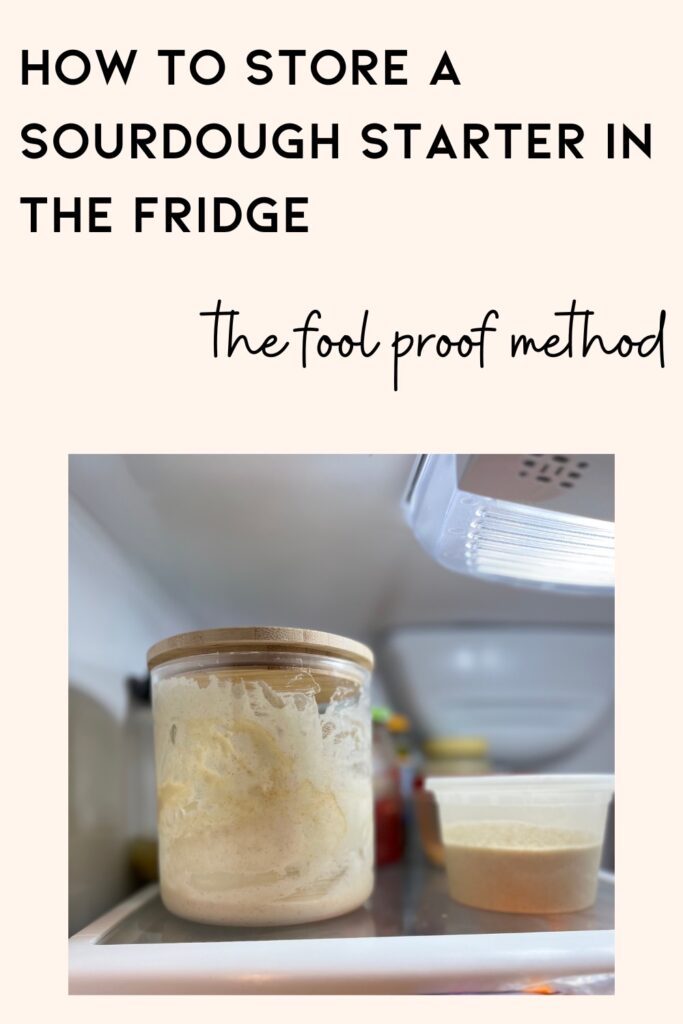
How long do you store your sourdough starter in the fridge? We tend to use our sourdough starter weekly, though not enough to store it on the countertop. We alternate baking two loaves of bread one week and a dessert the next. Let us know your thoughts in the comments below!

